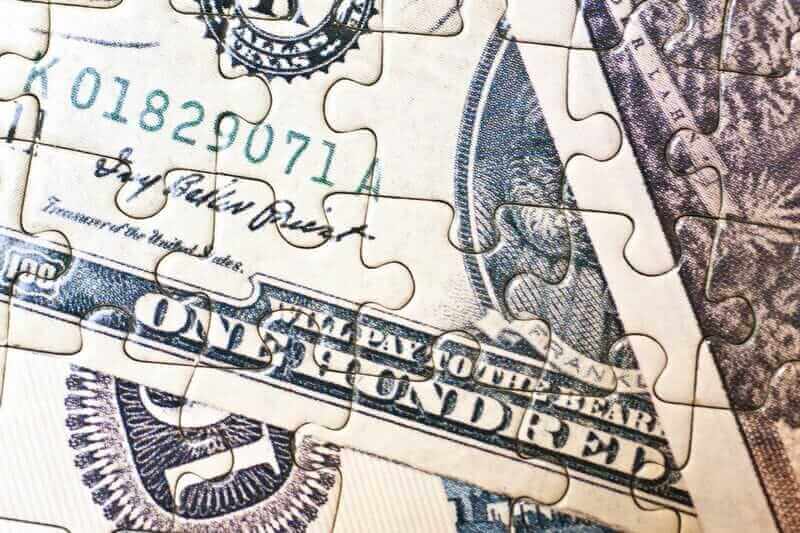
The dollar index (DXY00) on Thursday recovered from an early 5-week low and finished up +0.12%. The dollar found support Thursday from higher T-note yields. Also, comments from Cleveland Fed President Mester and Richmond Fed President Barkin, who said interest rates should stay higher for longer, were bullish for the dollar.
Thursday’s US economic reports were mixed for the dollar. The dollar was undercut by dovish comments from New York Fed President Williams, who said he doesn't "see any need to tighten monetary policy today."
US weekly initial unemployment claims fell -10,000 to 222,000, showing a weaker labor market than expectations of 220,000.
US Apr housing starts rose +5.7% m/m to 1.36 million, weaker than expectations of 1.421 million. Apr building permits (a proxy for future construction) unexpectedly fell -3.0% m/m to a 15-month low of 1.44 million, weaker than expectations of 1.48 million.
The US May Philadelphia Fed business outlook survey fell -11.0 to 4.5, weaker than expectations of 7.8.
The US Apr import price index ex-petroleum rose +0.7% m/m, stronger than expectations of +0.1% m/m and the largest increase in 16 months.
US Apr manufacturing production unexpectedly fell -0.3% m/m, weaker than expectations of +0.1% m/m.
New York Fed President Williams said the softer tone of April's CPI is "kind of a positive development" and "the overall trend looks reasonably good" for a gradual slowdown in inflation pressures. He added that monetary policy is "restrictive" and "is in a good place," and he doesn't "see any need to tighten monetary policy today."
Cleveland Fed President Mester said, "Holding our restrictive stance for longer is prudent at this point as we gain clarity about the path of inflation."
Richmond Fed President Barkin said he believes inflation is coming down and the Fed needs a "little bit more time" to lower inflation to its 2% target, citing higher prices in the services sector.
The markets are discounting the chances for a -25 bp rate cut at 10% for the June 11-12 FOMC meeting and 32% for the following meeting on July 30-31.
EUR/USD (^EURUSD) on Thursday fell by -0.13%. The euro on Thursday fell back from a 1-3/4 month high and posted modest losses based on dovish comments from ECB Governing Council members Centeno and de Cos. Also, a rebound in the dollar Thursday sparked long liquidation in the euro.
ECB Governing Council member de Cos said the "central scenario" is for an interest-rate reduction by the ECB at its next meeting on June 6.
ECB Governing Council member Centeno said he sees the ECB on a path of interest rate reductions for "some time."
Swaps are discounting the chances of a -25 bp rate cut by the ECB at 97% for its next meeting on June 6.
USD/JPY (^USDJPY) Thursday rose by +0.30%. The yen fell back from a 1-1/2 week high against the dollar Thursday after Q1 Japan's GDP contracted more than expected, a dovish factor for BOJ policy. Also, higher T-note yields Thursday undercut the yen. Losses in the yen were limited after the Japan Q1 GDP deflator rose more than expected and Japan’s Mar industrial production was revised higher, hawkish factors for BOJ policy.
Japan's Q1 GDP fell -2.0% (q/q annualized), weaker than expectations of -1.2%. The Q1 GDP deflator rose +3.6% y/y, stronger than expectations of +3.3% y/y.
Japan Mar industrial production was revised upward to +4.4% m/m from the previously reported +3.8% m/m.
Swaps are pricing in the chances for a +10 bp rate increase by the BOJ at 27% for the June 14 meeting.
June gold (GCM4) Thursday closed down -9.4 (-0.39%), and July silver (SIN24) closed up +0.147 (+0.49%). Precious metals prices settled mixed on Thursday, with July silver climbing to a 5-week high and nearest-futures May posting a 3-year high. Strength in the dollar Thursday was bearish for metals. Also, higher global bond yields Thursday undercut precious metals prices. Silver was undercut by Thursday’s weaker-than-expected US Apr housing starts and building permits reports and the steeper-than-expected contraction in Japan's Q1 GDP, negative factors for industrial metals demand.
On the bullish side, precious metals garnered support on increased demand as an inflation hedge after the US Apr import price index ex-petroleum posted its largest increase in 16 months. Also, dovish central bank comments on Thursday boosted the demand for precious metals as a store of value. New York Fed President Williams said he doesn't "see any need to tighten monetary policy today." In addition, ECB Governing Council member Centeno said he sees the ECB on a path of interest rate reductions for "some time."
On the date of publication, Rich Asplund did not have (either directly or indirectly) positions in any of the securities mentioned in this article. All information and data in this article is solely for informational purposes. For more information please view the Barchart Disclosure Policy here.






